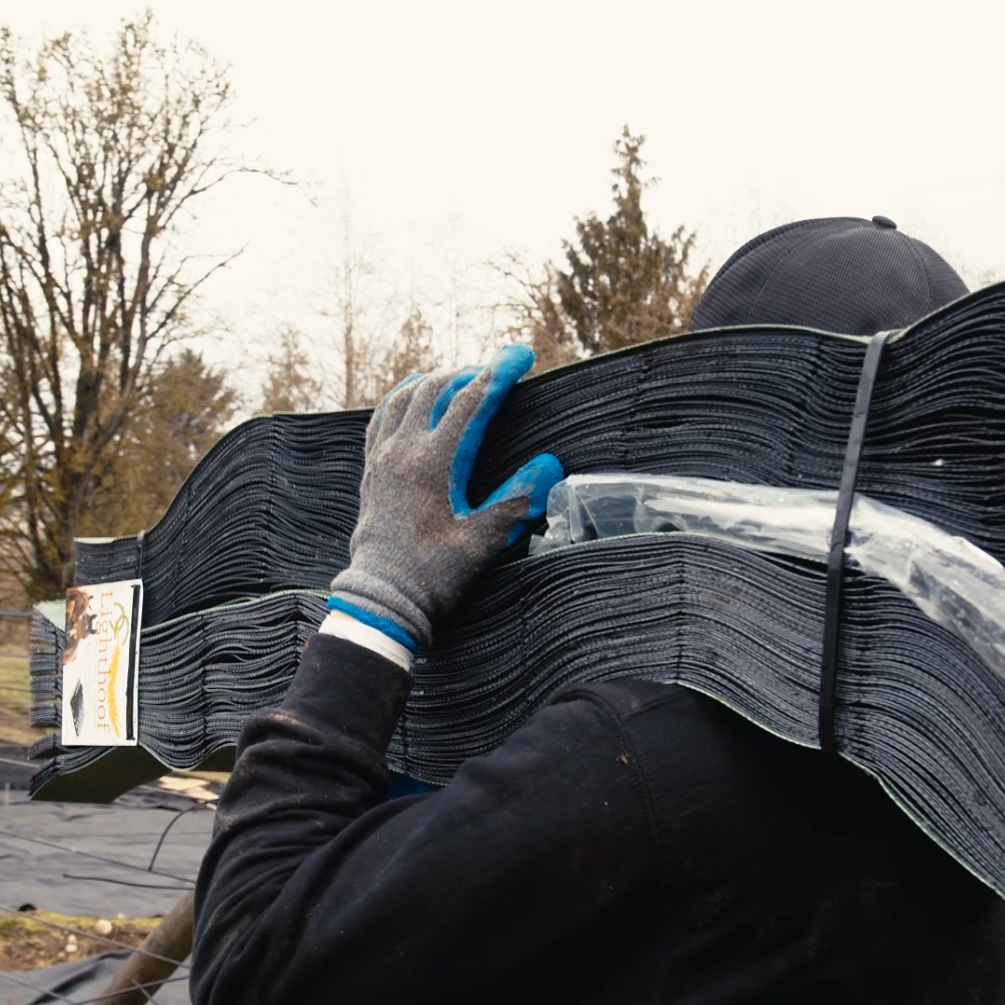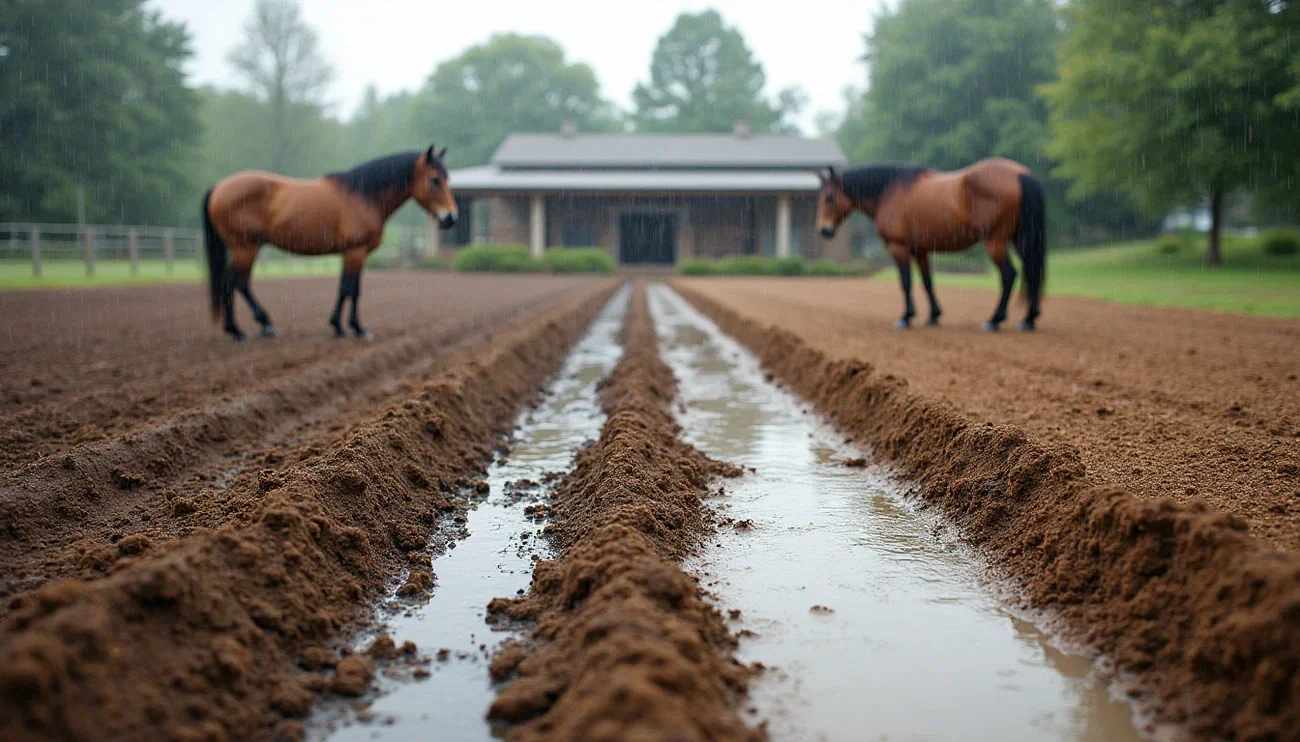Why a True Grass-Free Zone is Essential for Spring Pasture Management, Hoof Health, and Metabolic Safety
Spring brings longer days, warmer weather, and a surge in lush green grass. While this seasonal growth may look idyllic, it can be a dangerous time for horses prone to laminitis. Sudden access to sugar-rich spring grass is a known trigger for grass-induced laminitis.
That’s why many horse owners rely on dry lots to manage turnout during the spring transition. But here’s the challenge: dry lots aren’t always as “dry” or grass-free as we think. Even with frequent dragging or turnout rotation, hardy grasses and weeds often creep back, especially in high-traffic areas like gates and fence lines. Overgrazed, stressed grass can be even higher in sugar than unstressed grass!!
Enter Lighthoof.
The Problem with Partial Grass Suppression
Traditional dry lot maintenance—like mowing, spraying (with something horse-safe), or scraping with equipment—can be labor-intensive and short-lived. Grasses, especially aggressive pasture species, are incredibly resilient. In the high-growing season, sugary shoots can emerge as fast as horses can eat them. This makes managing metabolic horses or those at risk of laminitis even more difficult, as even a small amount of spring grass can cause a flare-up.
Lighthoof: Your Long-Term Solution for Grass-Free Safety
Lighthoof’s flexible geocell panels are designed to control mud, but they’re also highly effective at suppressing grass and plant growth in high-risk dry lot zones.
Here’s how:
- Compacted, non-organic layer: Lighthoof panels form a compacted gravel barrier that smothers existing vegetation, provides no nutrients, and makes it harder for new grasses to take root.
- Holds geotextile fabric in place: Lighthoof's underlayment acts as a weed barrier and is protected from pulling out or shifting by the Lighthoof panels.
- Easy to clean: Lighthoof creates a smooth surface that can be raked or dragged without disturbing the base, making it easier to remove manure and prevent nutrient buildup that fuels unwanted plant growth.
- Ideal for sensitive zones: Install panels at gates, under shelters, and around waterers to eliminate persistent grass and mud issues.
Building a Laminitis-Safe Turnout Space
If you’re preparing a spring dry lot or safe turnout zone for a horse with metabolic issues, here are a few tips for using Lighthoof most effectively:
- Fully cover the area where grass is most likely to return, especially near gates, fencelines, or where manure tends to accumulate.
- Use geotextile underlayment beneath your Lighthoof panels—to create a barrier layer that won't allow grass to sprout through.
- Fill and top with a hoof-safe footing, use angular gravel with fines for stability within the cells, and choose the same material or a comfortable washed sand over the panels if the horse is already suffering from hoof sensitivity.
- Keep it clean. Regular manure removal helps reduce nitrogen buildup in the footing that can otherwise encourage weed growth.
- Keep it in use! Constant hoof traffic will crush and kill any sprouts that try to take hold in the gravel before they can grow into something edible.
Ending the grass battle for horse owners!
Whether you’re managing a horse with insulin resistance, EMS, or past laminitic episodes, Lighthoof gives you peace of mind by helping maintain a sugar-free turnout space. With spring grass growth often unpredictable and truly dangerous, creating a space where your horse can enjoy time outside—without risk—is one of the best things you can do for their long-term health.

Ready to transform your dry lot into a safer space?
Learn more about using Lighthoof to build a laminitis-safe turnout zone here.





Leave a comment
This site is protected by hCaptcha and the hCaptcha Privacy Policy and Terms of Service apply.